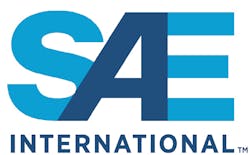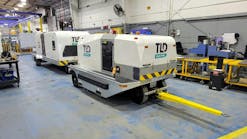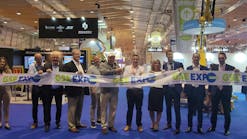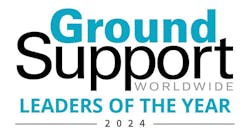SAE International, formerly the Society of Automotive Engineers, is a professional standards organization for engineering professionals in various industries. SAE is based in the United States but is active in the global marketplace.
The principal focus of SAE is mobility industries including automotive and aerospace. SAE develops and publishes technical standards based on best practices identified and described by SAE technical committees.
SAE was founded in 1905 and counted Henry Ford and Orville Wright among it's earliest board members.
Since 1988, I have participated on the AGE-2C Vehicle Maintenance and Aircraft Servicing Committee, which is a sub-committee of AGE-2 Air Cargo and Aircraft Ground Equipment and Systems Committee. Committee members are voluntary subject matter experts who come from both manufacturers of GSE and from airlines who use the equipment and are not acting as representatives of any company.
AGE-2C currently maintains a library of 85 documents consisting of design specifications and practices, recommended practices and test procedures for a wide range of GSE and subsystems as well as maintenance recommendations. These documents may be used by both manufacturers and airlines to place the best equipment possible on airport ramps.
Each published document is reviewed every five years for accuracy and relevance in a changing technical environment. A committee member will sponsor the review of a document or the creation of a new document that the committee believes is warranted. The sponsor will collaborate with other members or experts outside of the committee in writing or revising a document. The draft is then balloted to the entire committee who can approve or disapprove. All disapprovals must be accompanied by a detailed technical objection which must be resolved by the document sponsor before the document can be sent to SAE Aerospace Council for final approval and publication.
Here are but a few examples of the information which is available on SAE's website:
- Airline Tow Tractor - Baggage/Cargo Factors for Design Consideration.
- Ground Support Equipment Electrical Systems.
- Minimum Safety Requirements for Special Purpose Airline Ground Support Equipment.
- Ground Equipment Rebuild Program.
- Maintenance of Batteries and Battery Charging and Servicing Facilities.
- Maintenance of Ground Support Equipment.
- Method of Evaluating Pneumatic Ground Power Units.
- Design Guide for Aerospace Ground Air Conditioning.
- Selection Criteria for Internal Combustion Engines Used in Ground Support Equipment.
- Baggage/Cargo Trailer Requirements.
- Method of Testing Pre-Conditioned Air Equipment.
Whether you are a manufacturer wishing to improve your products or determine if they meet best practices or an airline purchaser wishing to obtain the best equipment, SAE is a place you will want to
visit.
The next meeting of AGE-2C will be held Sept.16-18, at the Delta Training Center at the Hartsfield-Jackson Atlanta International Airport. For more information contact Rossanna Nation, aerospace standards
specialist supporting AGE-2C, at [email protected].
About the Author: Since 1994, D. Scott Barninger has been the director of ground support equipment for Piedmont Airlines, a wholly owned subsidiary of the new American Airlines. In that capacity Barninger oversees the maintenance of a fleet of approximately 4,200 pieces of motorized GSE. Prior to joining Piedmont Airlines, Barninger worked as an engineer for ACE/Devtec (now TLD America) and Air-A-Plane Corp.





